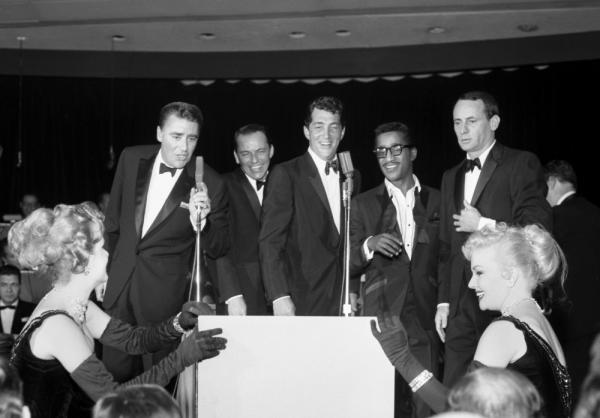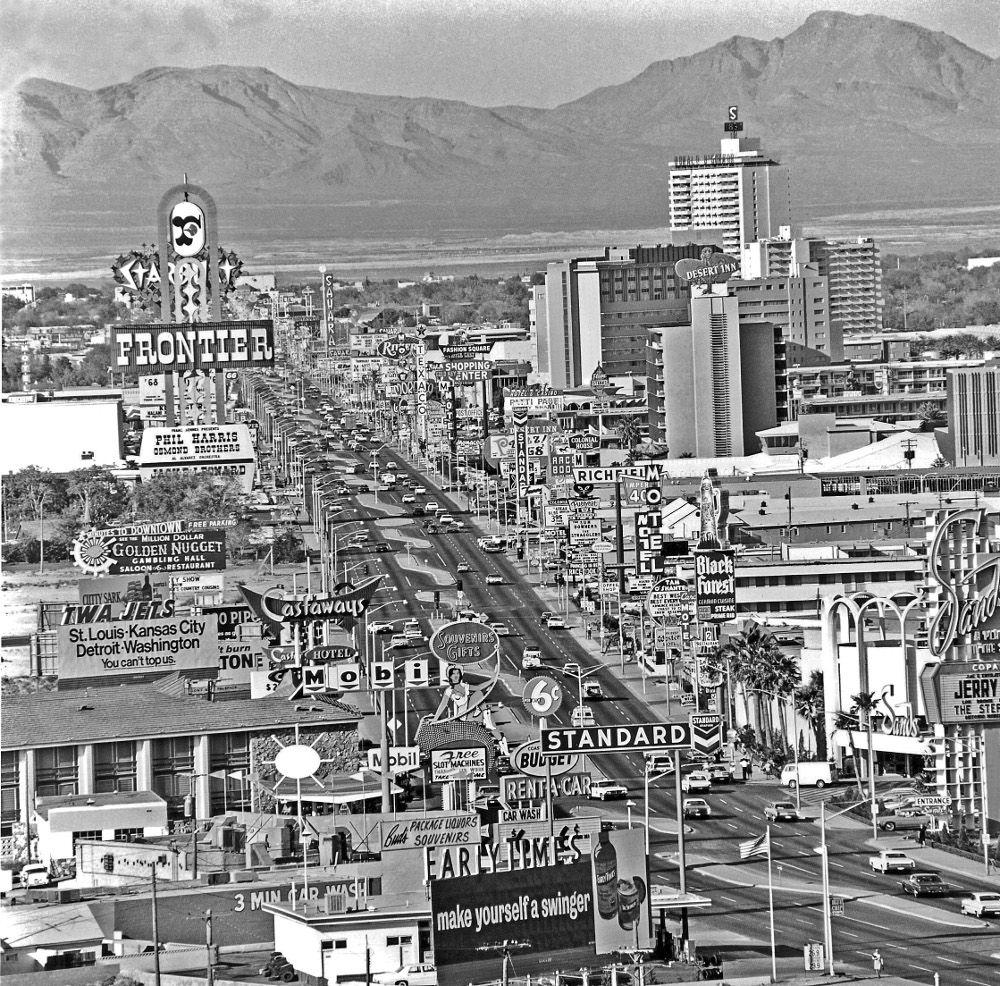50 States of Preservation: Las Vegas Convention Center in Las Vegas, Nevada

From left, Peter Lawford, Frank Sinatra, Dean Martin, Sammy Davis Jr. and Joey Bishop perform during the ""Summit at the Sands"" January 20, 1960. Photo Date: 01/20/1960
Image courtesy of Las Vegas News Bureau.

From left, Peter Lawford, Frank Sinatra, Dean Martin, Sammy Davis Jr. and Joey Bishop perform during the ""Summit at the Sands"" January 20, 1960. Photo Date: 01/20/1960
Image courtesy of Las Vegas News Bureau.
This feature is part of a series we call “50 States of Preservation,” in which we are touring small and mid-sized museums, libraries, historical societies, and other repositories across the country to show how they are helping to preserve the nation’s cultural heritage. Read other entries in the series here.
In the middle of the 20th century the city of Las Vegas and the surrounding region of Southern Nevada truly came into their own. Construction boomed in the post-war era, including the Historic Westleigh Neighborhood and the Fabulous Flamingo Hotel. The Las Vegas Strip grew out and then up, from its early days as Highway 91 through many iterations of hotels, motels, marquees, and attractions.
Frank Sinatra (and the Rat Pack) performed on Las Vegas stages hundreds of times. The Beatles performed in Las Vegas in August 1964 during their first tour of the United States, and Elvis Presley married Priscilla Beaulieu at the Aladdin Hotel in 1967. The government used the region as the site for atomic testing in the 1950s, and the News Bureau created the iconic “Miss Atomic Bomb” photo as a publicity stunt. The U.S. Air Force’s World Congress of Flight was the first international air show in the country’s history, attracting participants from 51 countries and was the first convention held in the brand new Las Vegas Convention Center.
At the end of World War II, the Las Vegas Chamber of Commerce created the “Live Wire” fund to finance a marketing campaign to promote Las Vegas as a leisure destination. What is now known as the Las Vegas News Bureau was created in 1947 to further that aim. Now part of the Las Vegas Convention and Visitors Authority (LVCVA), the Bureau collects and preserves the largest and most comprehensive collection of Southern Nevada imagery in the world—an estimated 3 million photographs, dating from 1947 to the present.
Two NEH Preservation Assistance Grants are helping to preserve these fragile photographic images. “Many of our films were deteriorating rapidly in the metal canisters they were originally housed in,” explains Archivist Kelli Luchs, “and the materials purchased as part of the grant stemmed that decline.” NEH funds supported a survey and recommendations from photograph conservation expert Monique C. Fischer of the Northeast Document Conservation Center. A second award allowed the Bureau to remove a portion of the photographs and negatives from harmful conditions and rehouse them to be more easily accessible for the public.
The NEH grants, says Luchs, also catalyzed the LVCVA to digitize its collection of photographs and moving images. “As we rehoused our materials we became cognizant of the need to create a digitization program as part of our current preservation work. We have currently digitized over 600 films and 22,000 negatives.” The LVCVA responds to 1,000 requests annually from around the world, and also puts on educational exhibitions in public venues throughout the year. “The grants have allowed us to explore and preserve our collection,” says Luchs, “and catalog thousands of images that we have been able to share with the public through our photo/video requests and exhibitions.”
In every state, NEH supports organizations that preserve humanities collections. Preservation Assistance Grants for Smaller Institutions (PAGs) fund projects that help safeguard photographs, letters, documents, prints, moving images, sound recordings, maps, drawings, artworks, textiles, furniture, and artifacts, making them available for future generations. These collections help researchers, educators, and members of the public better understand the complex stories of the various cities, towns, and tribal groups that make up our nation.
Since 2000, NEH has made nearly 2,000 Preservation Assistance Grants to small and mid-sized organizations to preserve and care for their humanities collections. In all 50 states, the District of Columbia, and Puerto Rico and the Virgin Islands, PAG awards have funded preservation assessments, purchase of shelving, environmental monitoring equipment, and preservation supplies, and training for staff. Organizations in all states and U.S. territories are eligible to apply, and the program encourages applications from those new to NEH. The next application deadline Preservation Assistance Grants for Smaller Institutions is May 1, 2018. If you have any questions about this grant program, please contact us at @email or 202-606-8570.












